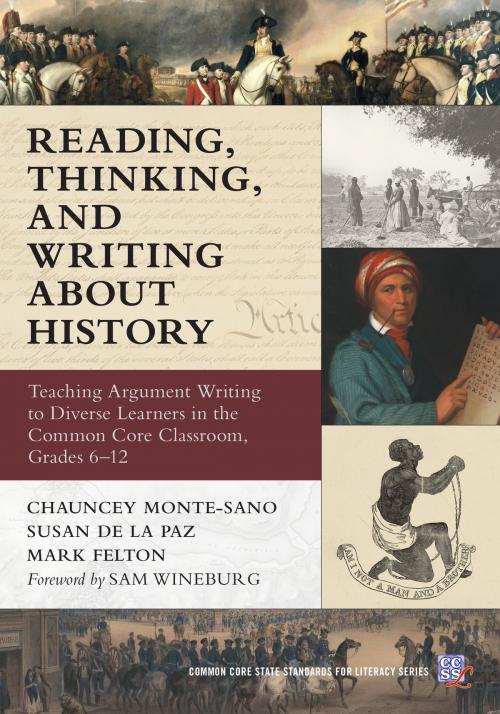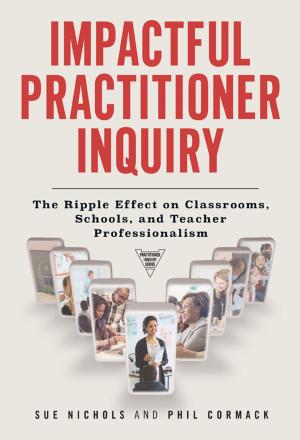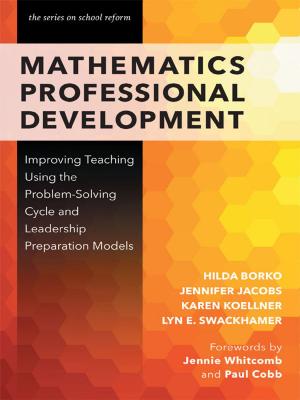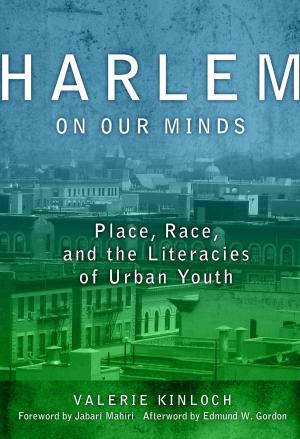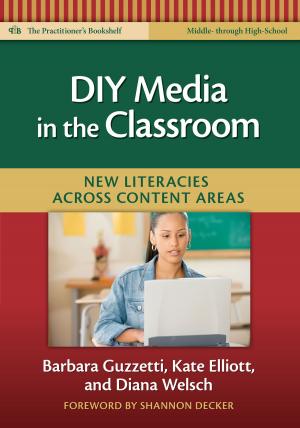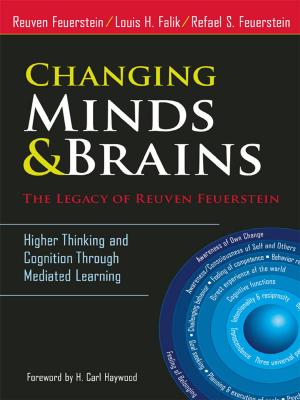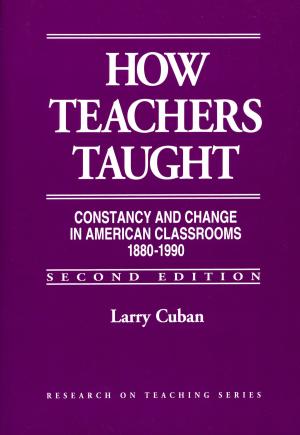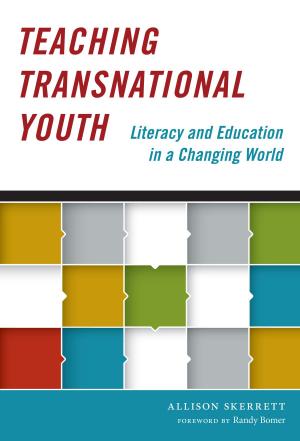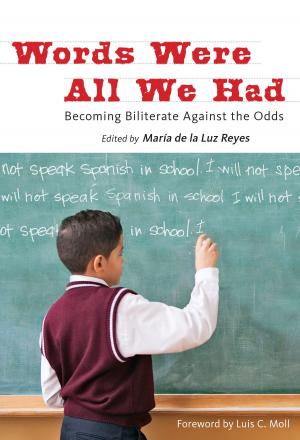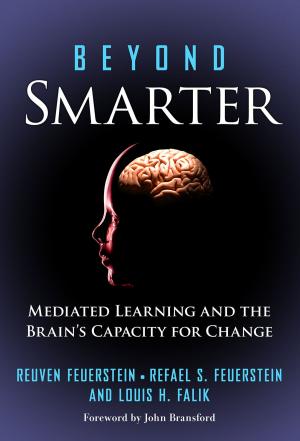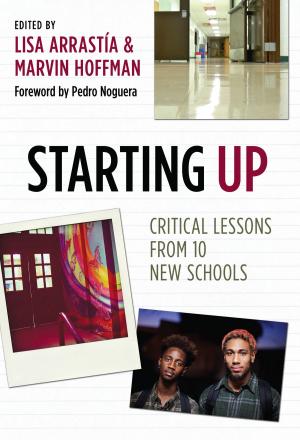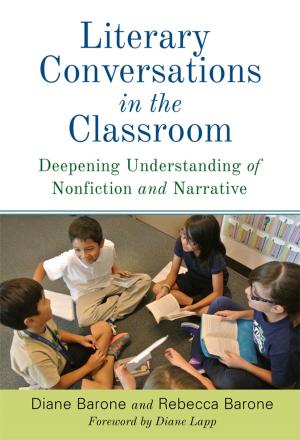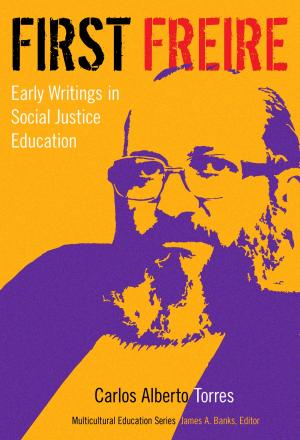Reading, Thinking, and Writing About History
Teaching Argument Writing to Diverse Learners in the Common Core Classroom, Grades 6-12
Nonfiction, Reference & Language, Education & Teaching, Educational Theory, Curricula, Language Arts, Literacy, Teaching, Teaching Methods| Author: | Chauncey Monte-Sano, Susan De La Paz, Mark Felton | ISBN: | 9780807772874 |
| Publisher: | Teachers College Press | Publication: | December 15, 2009 |
| Imprint: | Language: | English |
| Author: | Chauncey Monte-Sano, Susan De La Paz, Mark Felton |
| ISBN: | 9780807772874 |
| Publisher: | Teachers College Press |
| Publication: | December 15, 2009 |
| Imprint: | |
| Language: | English |
Although the Common Core and C3 Framework highlight literacy and inquiry as central goals for social studies, they do not offer guidelines, assessments, or curriculum resources. This practical guide presents six research-tested historical investigations along with all corresponding teaching materials and tools that have improved the historical thinking and argumentative writing of academically diverse students. Each investigation integrates reading, analysis, planning, composing, and reflection into a writing process that results in an argumentative history essay. Primary sources have been modified to allow struggling readers access to the material. Web links to original unmodified primary sources are also provided, along with other sources to extend investigations. The authors include sample student essays from each investigation to illustrate the progress of two different learners and explain how to support students’ development. Each chapter includes these helpful sections: Historical Background, Literacy Practices Students Will Learn, How to Teach This Investigation, How Might Students Respond?, Student Writing and Teacher Feedback, Lesson Plans and Materials.
Book Features:
- Integrates literacy and inquiry with core U.S. history topics.
- Emphasizes argumentative writing, a key requirement of the Common Core.
- Offers explicit guidance for instruction with classroom-ready materials.
- Provides primary sources for differentiated instruction.
- Explains a curriculum appropriate for students who struggle with reading, as well as more advanced readers.
- Models how to transition over time from more explicit instruction to teacher coaching and greater student independence.
“The tools this book provides—from graphic organizers, to lesson plans, to the accompanying documents—demystify the writing process and offer a sequenced path toward attaining proficiency.”
—From the Foreword by Sam Wineburg, co-author of Reading Like a Historian
“Assuming literate practice to be at the core of history learning and historical practice, the authors provide actual units of history instruction that can be immediately applied to classroom teaching. These units make visible how a cognitive apprenticeship approach enhances history and historical literacy learning and ensure a supported transition to teaching history in accordance with Common Core State Standards.”
—Elizabeth Moje, Arthur F. Thurnau Professor, School of Education, University of Michigan
“The C3 Framework for Social Studies State Standards and the Common Core State Standards challenge students to investigate complex ideas, think critically, and apply knowledge in real world settings. This extraordinary book provides tried-and-true practical tools and step-by-step directions for social studies to meet these goals and prepare students for college, career, and civic life in the 21st century.”
—Michelle M. Herczog, president, National Council for the Social Studies
Although the Common Core and C3 Framework highlight literacy and inquiry as central goals for social studies, they do not offer guidelines, assessments, or curriculum resources. This practical guide presents six research-tested historical investigations along with all corresponding teaching materials and tools that have improved the historical thinking and argumentative writing of academically diverse students. Each investigation integrates reading, analysis, planning, composing, and reflection into a writing process that results in an argumentative history essay. Primary sources have been modified to allow struggling readers access to the material. Web links to original unmodified primary sources are also provided, along with other sources to extend investigations. The authors include sample student essays from each investigation to illustrate the progress of two different learners and explain how to support students’ development. Each chapter includes these helpful sections: Historical Background, Literacy Practices Students Will Learn, How to Teach This Investigation, How Might Students Respond?, Student Writing and Teacher Feedback, Lesson Plans and Materials.
Book Features:
- Integrates literacy and inquiry with core U.S. history topics.
- Emphasizes argumentative writing, a key requirement of the Common Core.
- Offers explicit guidance for instruction with classroom-ready materials.
- Provides primary sources for differentiated instruction.
- Explains a curriculum appropriate for students who struggle with reading, as well as more advanced readers.
- Models how to transition over time from more explicit instruction to teacher coaching and greater student independence.
“The tools this book provides—from graphic organizers, to lesson plans, to the accompanying documents—demystify the writing process and offer a sequenced path toward attaining proficiency.”
—From the Foreword by Sam Wineburg, co-author of Reading Like a Historian
“Assuming literate practice to be at the core of history learning and historical practice, the authors provide actual units of history instruction that can be immediately applied to classroom teaching. These units make visible how a cognitive apprenticeship approach enhances history and historical literacy learning and ensure a supported transition to teaching history in accordance with Common Core State Standards.”
—Elizabeth Moje, Arthur F. Thurnau Professor, School of Education, University of Michigan
“The C3 Framework for Social Studies State Standards and the Common Core State Standards challenge students to investigate complex ideas, think critically, and apply knowledge in real world settings. This extraordinary book provides tried-and-true practical tools and step-by-step directions for social studies to meet these goals and prepare students for college, career, and civic life in the 21st century.”
—Michelle M. Herczog, president, National Council for the Social Studies
